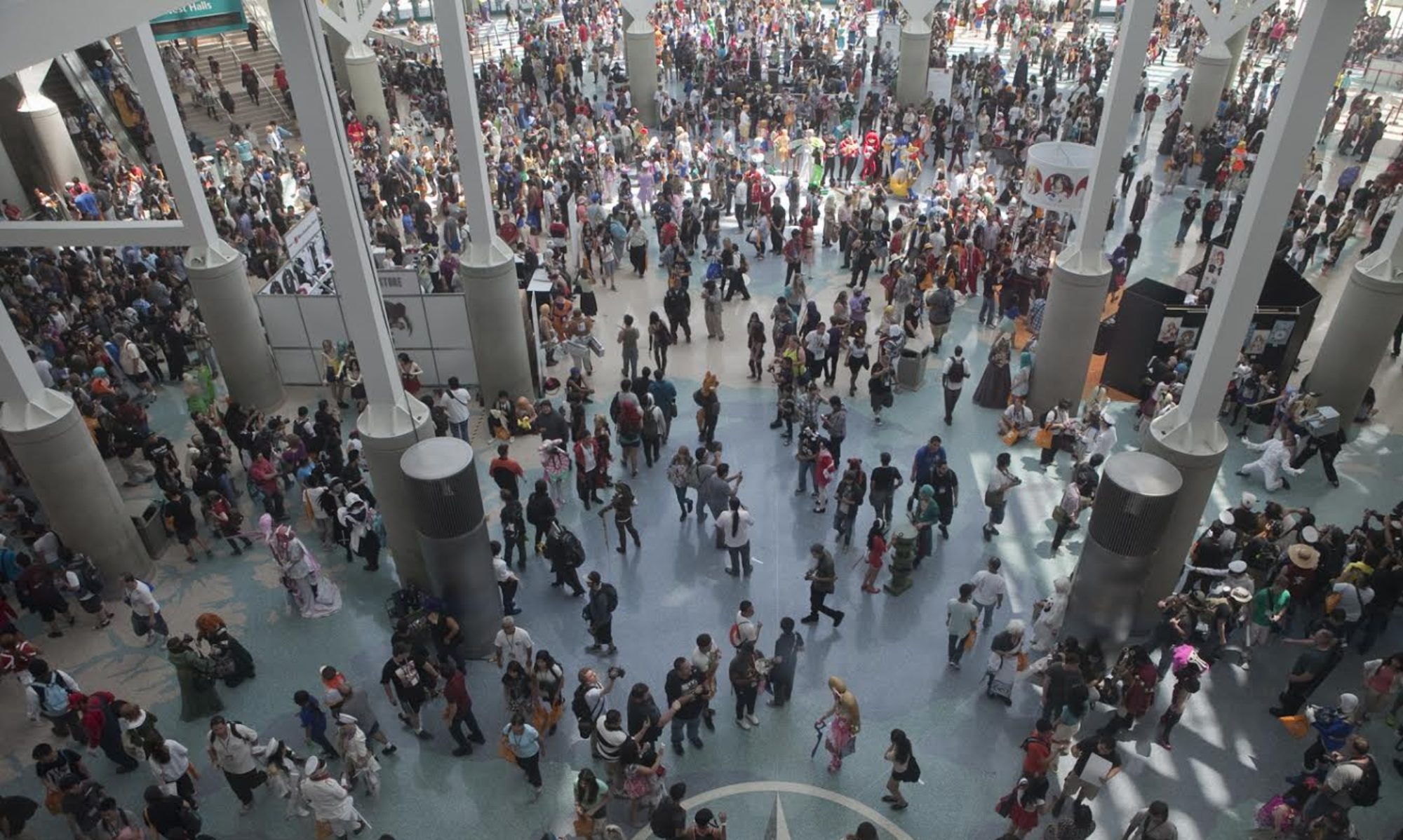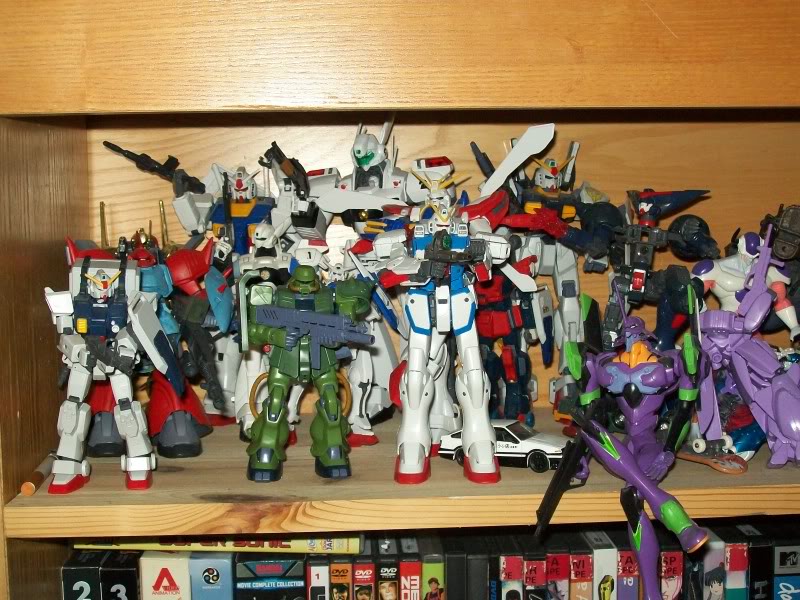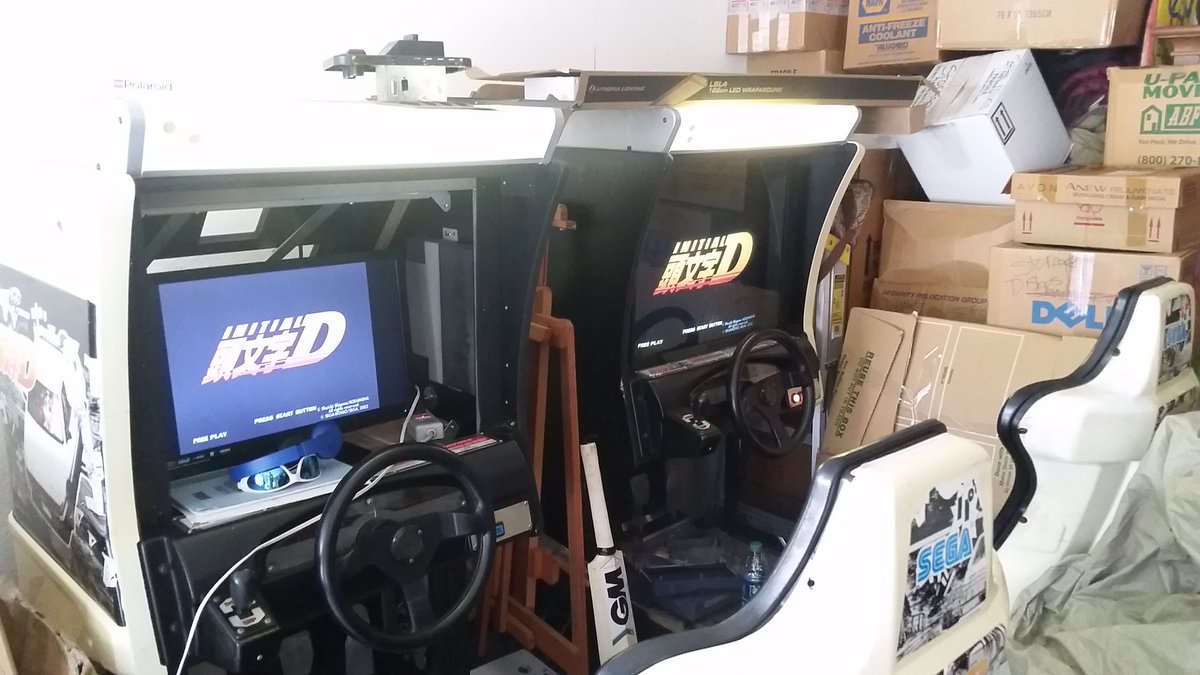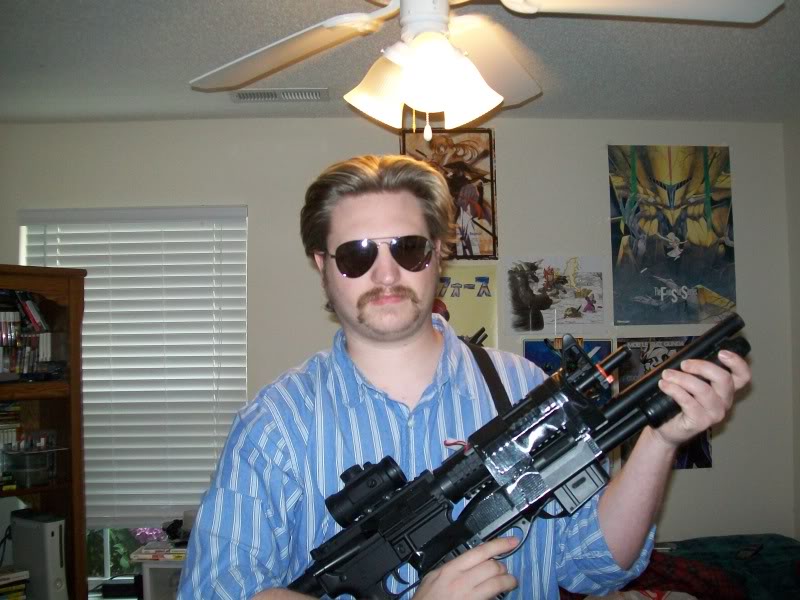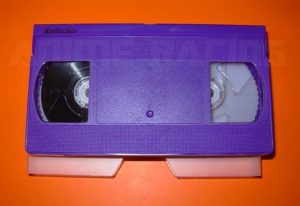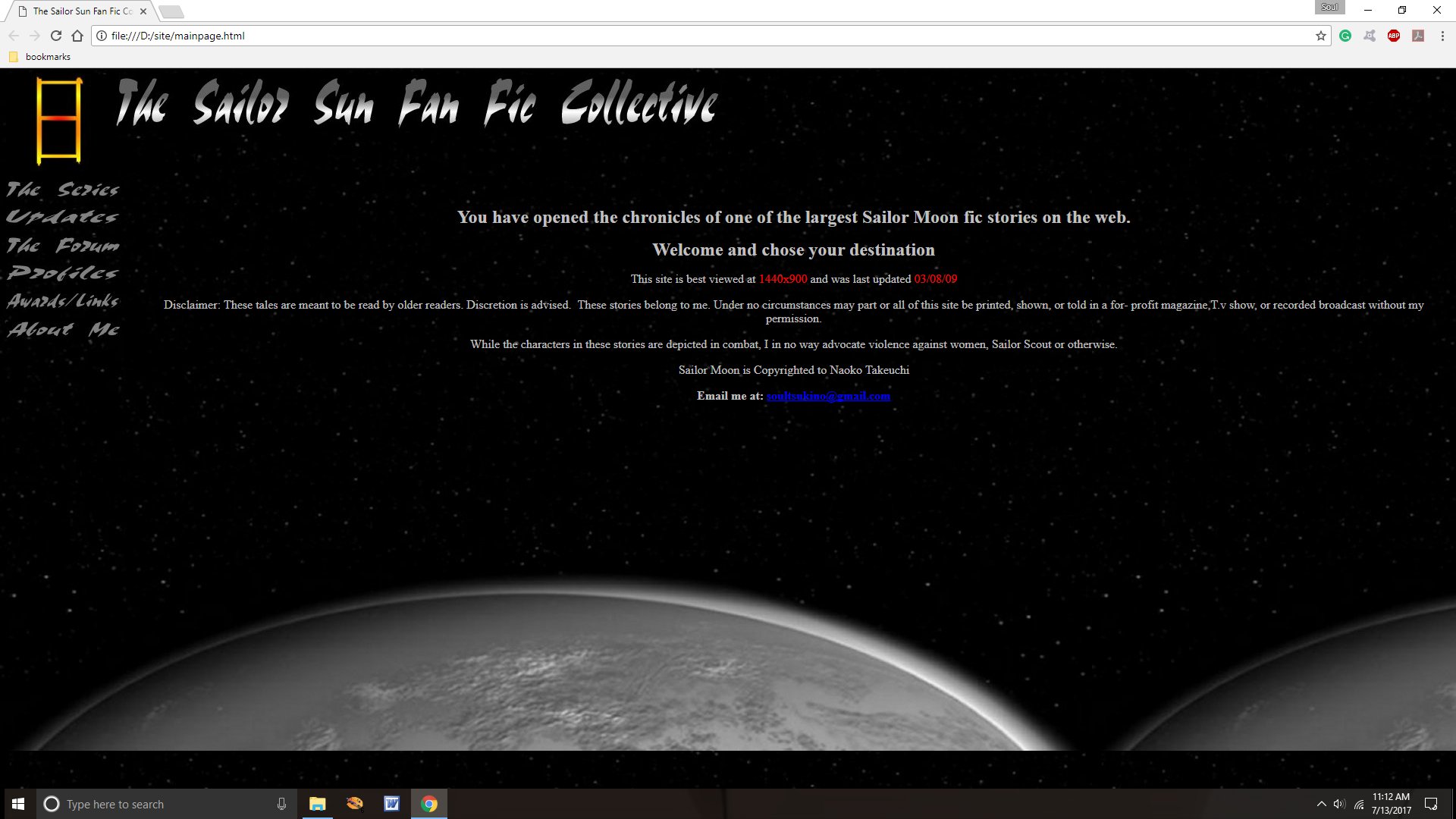Age: 35
Location: Washington, DC
When did you discover anime? Share as much as you remember. It was the back half of 1995—either the summer before high school or early in my freshman year. The father of one of my middle school friends was a huge audiophile, and he had a big TV with an amazing sound system in the basement, and my friends and I would hang there. Another friend brought subtitled VHS tapes of The Slayers, the first half of the first season, and we shotgunned them in one sitting. Anime was rare or non-existent on syndicated TV in DC at the time, and I didn’t have cable growing up, so it was my first time seeing anything like it.
What appealed to you about anime when you first discovered it? The answer that makes me look good is that it was about characterization and serialization. This was just a couple of years after Twin Peaks, X-Files, and Babylon 5 had barely started, so (outside soap operas) serialization on American TV was still very rare and limited to SF shows. Character-driven drama within a genre setting was also pretty rare on American TV pre-Buffy, so Neon Genesis Evangelion (the next box set we marathoned in that basement) was a revelation.
There’s also just my lifelong love affair with animation. I moved from being a little kid watching the toy-driven dreck of the mid-80s to a slightly older kid watching Ducktales and Animaniacs, then a tween watching Batman: The Animated Series and early Simpsons. Becoming a teenaged anime fan was the next logical step.
The answer that makes me look less good: I was 14, in the process of discovering I have a thing for smart, ass-kicking redheads with strong opinions and nasty tempers, and my first two anime were The Slayers and Neon Genesis Evangelion. Add in that my crush for most of high school was a Japanophile and… yeah.
Tell me about your high school crush! Did anything come out of that? She was smart, shy, small, and cute, basically the classic nerd version of the girl next door. Brilliant with computers—I think she works for Microsoft now—and like I said, a major Japanophile. JRPGs, manga, anime, eventually language and culture, literature, food. As for what came out of it, a close friendship that lasted a decade or so before she moved out to the west coast and we lost touch. Never dated, but that’s probably for the best.
What would you say was the most popular anime at the time? Like I said, the DC area didn’t really get anime on TV until Toonami. I never even heard of Dragon Ball Z or Sailor Moon until I started going to conventions in ’99. The gateway show for everyone—not just the half-dozen of us in that basement—was The Slayers. That was the thing EVERYONE watched and liked.
What was it like to be a part of anime fandom at the time? I’m not sure there was such a thing as anime fandom just yet. We were just nerds, and that meant you liked nerdy things. Someone who liked anime probably also liked tabletop RPGs, video games, science fiction, or science/tech–if not all of those things, at least most of them. So all of that would be in play when hanging out.
What was the first anime fandom you got really invested in? How did you express your fandom? Definitely The Slayers. Like I said, we all watched it and all enjoyed it, then moved on to other anime. But Slayers stuck with me more than the others. I wrote fanfic, which fortunately never left my computer and no longer exists in any form. I found the fansite Inverse.org and devoured everything they had on the backstory, the world, how magic worked, gods and monsters. A lot of that was from stuff only published in Japan, so in our little circle I was (at least at first) the only one who knew any of it. One summer during college, maybe 2003 or so, I got the Slayers d20 rulebook and ran a weekly tabletop game set hundreds of years after the show. Then, when the show had its 20th anniversary a couple of years ago, I did a panel on it at a couple of cons.
Oh, and my latest book starts with a quote from it!
Was the Internet a part of fandom at the time? If yes, how? If no, how did you connect with other fans? It was sort of in the process of becoming part of fandom. When I started, we all sort of got into anime together in that basement, and then met other people who were already into anime, or showed anime to other fans and got them into it. It was all in-person. The Internet had fansites and such, but that was one person or a small group posting up pictures and info, not really a social experience.
How did you get involved in this friend group? Did you all go to the same school or comic shop or something? Like I said, it started as a group of my middle school friends. Then I went to a different high school from most of them, and some of the friends I made there joined the group. We would all hang in one or another of our houses’ basements; sometimes we would watch anime, or play a tabletop RPG, or video games, depending on exactly who showed up and what mood we were in.
Do you remember your first convention? What was it, and what was it like?
Yes, my first convention was Otakon in ’99. It was kind of overwhelming! I’d never encountered so many anime fans in one place, and it was hard to know what to do. I spent a lot of time in video rooms, sampling shows I hadn’t heard of before. That was what cons were for, for me–finding out what anime was out there. It wasn’t until years later when I had broadband and could download (or, later, stream) shows that cons became about seeing people.
How did you get into blogging about anime and doing media analysis? I really didn’t know what I wanted to do when I started college, so I opened up the course guide and circled everything that sounded interesting. Then I added up the credits and figured out which degree that was closest to, and it turned out to be English. For shits and giggles, I decided that at least once a semester, I would do a paper that incorporated my nerdy interests, so already as an undergrad I was getting a little practice writing on things like religion in Final Fantasy, nonsense literature and webcomics, Milton and Lord of the Rings, that kind of thing. Somewhere in there, my friends and I watched a terrible-quality fansub of End of Evangelion, and they basically all turned to me and said, “Okay, Jen, you’re an English major. What the hell?” Being young and cocky, I said, “Give me a week.” I vaguely remembered some of the symbols that appeared in the movie from my Bar Mitzvah classes, which is a whole ‘nother story—Bar Mitzvah students are not supposed to be learning Kabbalah!—and I cobbled together a reading. More importantly, I had a lot of fun doing it!
Flash forward a decade. I was in a bit of a rut—I had a job, it was paying the bills, but I wanted to do something I cared about. One thing I did (and do!) really enjoy was presenting panels at conventions, because it was using the same mental muscles as those college papers and the End of Eva thing. Anyway, independently of that, I discovered this guy Phil Sandifer, and his amazing Doctor Who analysis—absolutely brilliant stuff. Through him, I discovered the world of media studies (he’s got a PhD in the field), which I hadn’t even known was a thing. I realized that this was exactly what I wanted to do. Grad school wasn’t really an option, but with some gentle prodding from my then-girlfriend Viga—who also got me into doing panels—I went the “outsider academic” route. I started blogging about animation, mostly American cartoons at first, but then I noticed that BY FAR my most popular post was a review and analysis I did on the third Madoka Magica movie, Rebellion. So I did a series of posts on the show, and The Very Soil, my book on Madoka Magica (shameless plug) grew out of that. And I pretty much just haven’t stopped since!
In your personal experience, what’s the biggest contrast between anime fandom then and anime fandom today? I’d say there are two really big changes. First is streaming. Anime is ridiculously easier to get—and get legally!—than it was back then. If I hear about a series, I can usually be watching it within minutes. But back then, well, we were lucky enough to have an anime-and-games store just a few blocks from our high school, and even then there’d be a lag of at least a year between the show airing in Japan and it showing up at Starland. And like I said, we were lucky—a lot of people had no way of getting anime at all, outside of the dealer’s room at a con or long chains of friends trading tapes with friends. The result, I think, is that things have sped up. New shows spread through the fandom faster, but they also fade faster. The hot new thing changes pretty much every season, where in the ’90s it would stay the same a lot longer because it just took longer until most people had seen it.
The other thing is, back in the ’90s and before, very few things actually made it to the U.S. With a few hilarious exceptions, that was usually the best of the best. And when we ’90s teens were kids, in the ’80s, American cartoons SUCKED. Nowadays we get basically every anime, including all the crap, and American animation has gotten massively, unfathomably better than it was when I was a kid. I write about this more in the “Secret History of Anime Fandom” section of my new book, Animated Discussions (shameless plug two), but basically I think the result is that there was a lot of hostility to American cartoons in anime fandom back then, and virtually none now. You especially see it with cosplay—some of the most popular cosplays of the last few years have been Steven Universe and Adventure Time characters. That would’ve been unthinkable at anime cons in 1999 or 2000.
Jen can be reached on Twitter.
